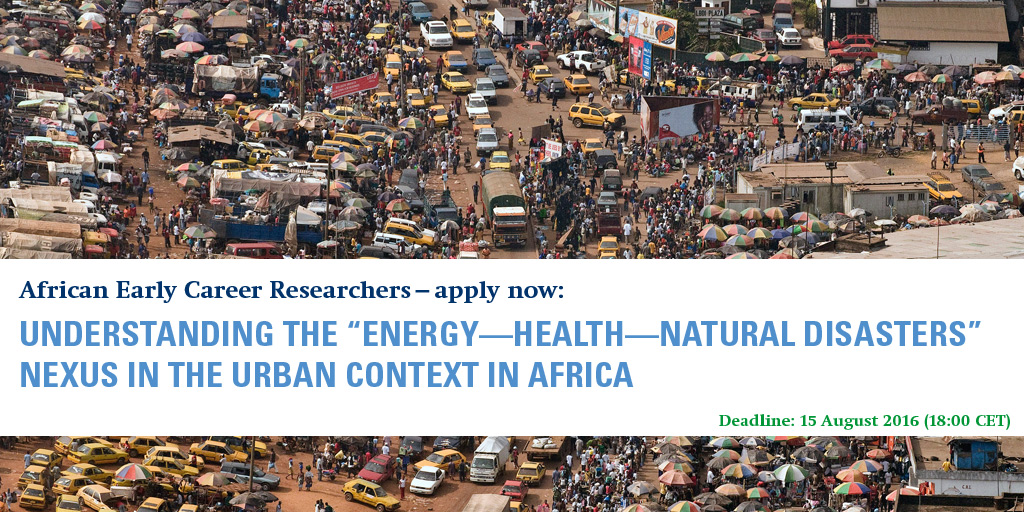EFN’s Reforestation Grant Program focuses on supporting communities in regaining ecological integrity and enhancing human wellbeing in deforested and degraded landscapes through forest restoration.
Biodiversity, Ecosystem Services and Biological Invasions
Poverty particularly among forest communities in Africa is a serious concern. This group contributes baseline information and indigenous knowledge on the contribution of forests to livelihood of local communities and national economies.
Ce livre nous emmène au coeur des zones de forêts denses et sahéliennes de l'Afrique centrale, un écosystème précieux et essentiel à la vie quotidienne de ses habitants, représentant l'un des trois principaux ensembles boisés tropicaux de la planète.
Farm forestry has proved to be an important enterprise for small- and large-scale farmers worldwide. It has the potential of improving forest/tree cover across the globe. In Kenya, the forest cover is less than 2%.
Attachment Size Modelling Determinants of Tree Planting and Retention on Farm.pdf 2.22 MB
Attachment Size Symposium Reg Form 2017F.doc 1.41 MB SymposiumAbstractform2017.doc 1.44 MB
This paper discusses the digitization of indigenous knowledge on forest foods and medicine for the effective management of Ghana’s forest resources.
Attachment Size digitization_IK.pdf 649.1 KB
The 12th Session of the United Nations Forum on Forests will be held in New York from 1-5 May 2017. The Agenda items include the following:
In Ghana, there is hardly any system of recording, documenting and preserving indigenous knowledge (IK) or information, let alone a mechanism for capturing IK to cope with dynamic world needs. An option that can be pursued is for the IK so captured to be digitised and stored for later use.
Allanblackia species are high value multipurpose indigenous fruit trees whose seeds contain edible oil that has become a foreign exchange earner for rural-based enterprises.
Attachment Size Mycorrhizal_allanblackia.pdf 2.47 MB
Attachment Size AFF-HAFL Scholarship Programme Call_2015_v2.pdf 272.99 KB Application Form_FINAL.doc 79 KB
Draft ministerial declaration of the high-level segment of the eleventh sesssion of the United Nations Forum on Forests
Attachment Size ECN182015L1Rev1-N1514038-Declaration - Copy (2).pdf 193.35 KB
Draft resolution submitted by the Chair of the United Nations Forum on Forests at its eleventh session, Noel Nelson Messone (Gabon), on the basis of informal consultations
Attachment Size ECN182015L2Rev1-1507842E-Resolution - Copy (2).pdf 107.24 KB
TWAS is inviting young scientists from the developing world, as well as policymakers and diplomats with a science portfolio, to apply to attend a TWAS Science Diplomacy workshop on Sustainable Water Management to be held in Trieste from 30 November to 4 December, 2015.
IUFRO’s Special Programme for Development of Capacities (SPDC) in collaboration with the World Resources Institute is organizing a 3-day training workshop on science-policy interactions for forest and landscape restoration in conjunction with the World Forestry Congress
Attachment Size 2015 May 13 Pre-Congress document.doc 390 KB
The XIV World Forestry Congress, hosted by the Republic of South Africa, will bring together the global forestry community to review and analyse the key issues and to share ways of addressing them.
SAF is seeking Associate Editors for Forest Science (looking for international professionals – ideally from Latin America, Asia, and Africa). Interested individuals can apply by sending a CV to Matt Walls (wallsm@safnet.org).
Gregory Award is a scholarship which helps bring students and young professionals from outside the US and Canada to the SAF Convention. The application is attached.
Attachment Size 2015-Gregory-Award-Announcement.pdf 131.78 KB
News
Events
Publications
Assessing differences in competitive effects among tree species in central British Columbia, Canada.
Research Highlights: We investigated the competitive interactions among three tree species (interior Douglas-fir (Pseudotsuga menziesii var. glauca (Beissn.) Franco), interior spruce (Picea glauca [Moench] Voss × Picea engelmannii Engelm.), and lodgepole pine (Pinus contorta Dougl. Ex Loud. var. latifolia Englem.)) in multi-aged stands in central British Columbia, Canada. Background and Objectives: Understanding competitive interactions among tree species in mixed-species stands is fundamental to supporting silvicultural decision-making in such stands.
This study sought to gain insight into the impact of thinning treatments on stand structure dynamics in uneven-aged interior Douglas-fir (Pseudotsuga menziesii var. glauca (Beissn.) Franco) dominated stands in central British Columbia (BC), Canada. We applied the Gini coefficient (GC) and the growth dominance coefficient (GDc) to determine how size inequality and growth dominance changed through time in both pre-commercially thinned (PCT) and unthinned stands across a moisture gradient.
Understanding the spatial patterns of trees and their interactions can reveal the ecological processes driving forest stand structure and stand development over time. We assessed temporal changes in tree spatial patterns in uneven-aged interior Douglas-fir (Pseudotsuga menziesii var. glauca (Beissn.) Franco) dominated stands in central British Columbia, Canada. Data were available on 24 plots in three blocks over 21 years, 18 of which had received pre-commercial thinning (PCT) treatments of varying intensity.
We assessed the impacts of three approaches to thinning from below with varying spatial patterns on several stand and individual tree variables for interior Douglas-fir (Pseudotsuga menziesii var. glauca (Beissn.) Franco), interior spruce (Picea glauca (Moench) Voss × Picea engelmannii Engelm.), and lodgepole pine (Pinus contorta Dougl. Ex Loud. var. latifolia Englem.) in central British Columbia, Canada.
Promoting the consumption of forest plant foods is a sustainable way of ensuring good nutrition and food security. This study assessed traditional knowledge on and use of forest plant foods in three administrative districts of Ghana and evaluated their potentials for domestication and processing. A total of 606 households were randomly selected and interviewed using enumerator-administered questionnaires.
| Attachment | Size |
|---|---|
| TK_forestplant_foods_Ghana.pdf | 1.11 MB |

